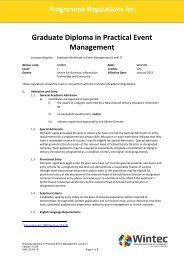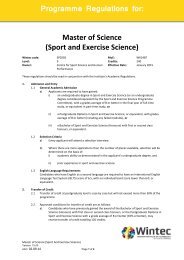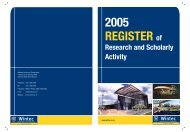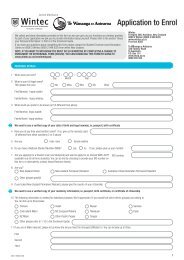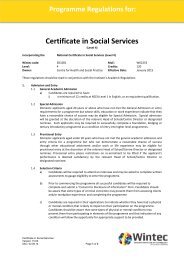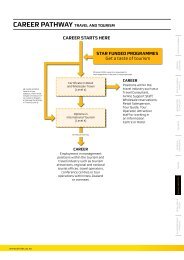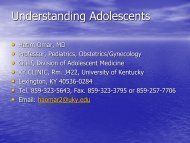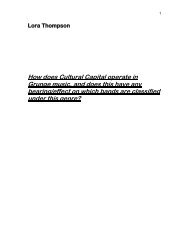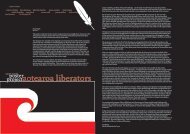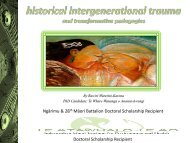Nursing Handover Research Project - Wintec Research Archive
Nursing Handover Research Project - Wintec Research Archive
Nursing Handover Research Project - Wintec Research Archive
You also want an ePaper? Increase the reach of your titles
YUMPU automatically turns print PDFs into web optimized ePapers that Google loves.
Chapter Four<br />
Discussion and recommendations<br />
Introduction<br />
The constructs from the text are some of the many that inform the discourse of nursing<br />
handover. These constructs can stand alone but seem to interlink on many levels. <strong>Handover</strong><br />
cannot just be seen as handing over information, without seeing it in its entirety. The explicit<br />
function of handover is to communicate information, but the construction of handover as just<br />
a tool for delivering and receiving information, has the potential to limit its other functions.<br />
These are functions that have less value associated with them in the literature, yet not to the<br />
nurse. Such functions provide support on a professional and social level, encompassing nurse<br />
as nurse, and nurse within the group, culture and institution.<br />
This chapter discusses how handover is constructed with many competing constructs, two of<br />
which are patient safety/risk management and nursing ritual. These differing constructs<br />
highlight that there are different gains from each construction, but also there are losses.<br />
Important nursing functions seem lost in the quest for patient safety and risk management.<br />
The human factor for both the nurse and the patient is forgotten. The challenges to this<br />
research project will be examined, and finally recommendations for practice will be shown,<br />
looking at their significance to practice.<br />
Discussion<br />
In the 21 st century there has been a strong movement towards patient safety and risk<br />
management. In the pursuit to achieve a safety culture there has also been a strong shift to<br />
standardise practice. Standardisation has merits but flexibility is needed within this concept<br />
to value local needs (ARCHI, 2010). Health care systems are under pressures; pressures such<br />
as technology, many staff/many handovers, communication problems-patient/staff and<br />
staff/staff, stress and tiredness, increase in patient acuity and staff shortages all add to the<br />
potential for error (Wong, 2002).<br />
26



